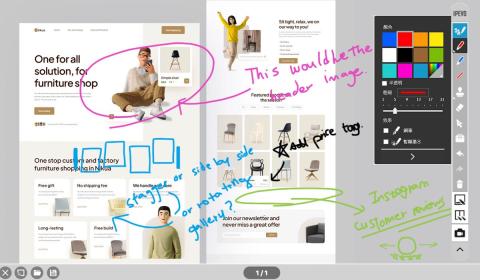Description
In complex multi-stakeholder systems, patients’ subjective experiences provide rich but unstructured data. To systematically incorporate these insights into iterative design, we propose a Subjective Annotation Toolkit, integrated directly into the Design Cycle of artifact creation and evaluation. The aim of this project is to develop and evaluate a Subjective Annotation Toolkit that systematically captures and structures patients’ experiential feedback for design improvement.
Tasks
- Implement a Pipeline for Patient-Centered Annotation on Artifacts
- Patients interact with digital mockups/prototypes of dashboards, visualizations, or interfaces.
- They annotate directly on the artifacts: mark confusing areas, suggest alternative visual encodings, highlight features they find useful or unnecessary, and express emotional responses (e.g., frustration, trust, satisfaction).
- Annotations can include free-text or sketches, preserving natural patient expression.
- Enable LLM-Mediated Translation and Structuring
- Translate subjective, colloquial, or metaphorical comments into structured thematic codes (e.g., “hard to find the lab results” → “navigation clarity issue”).
- Map annotations to visualization-relevant dimensions, such as interpretability, trust, cognitive load, or engagement.
- Summarize recurring themes across patients, generating multi-level outputs.
- Experts and patients can review annotations and LLM-synthesized themes together in real-time collaborative sessions, enabling bidirectional knowledge transfer and immediate clarification of misinterpretations.
- Evaluation of the Approach
- Conduct a small-scale study to assess the effectiveness, usability, and impact of the patient-centered annotation pipeline, including the quality of LLM-mediated interpretations and the value of insights for design improvements.
- Conduct a small-scale study to assess the effectiveness, usability, and impact of the patient-centered annotation pipeline, including the quality of LLM-mediated interpretations and the value of insights for design improvements.
Requirements
- Good knowledge of machine learning/AI (especially NLP/LLMs).
- Familiarity with UX research and participatory design.
- Potentially, familiarity with qualitative research methods (coding, thematic analysis, diary studies).
References
https://arxiv.org/pdf/2507.15821
Responsible
For more information please contact Renata Raidou.
